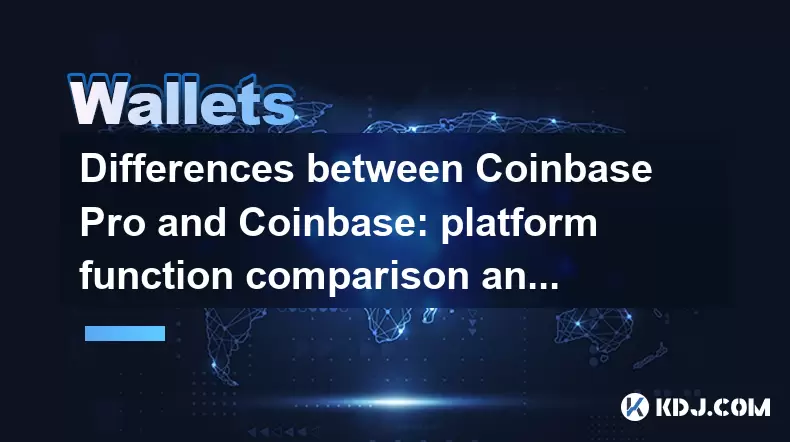-
 Bitcoin
Bitcoin $108,489.6704
1.13% -
 Ethereum
Ethereum $2,502.0528
2.92% -
 Tether USDt
Tether USDt $1.0002
0.00% -
 XRP
XRP $2.1941
0.51% -
 BNB
BNB $655.3375
1.00% -
 Solana
Solana $151.5977
1.27% -
 USDC
USDC $0.9999
0.00% -
 TRON
TRON $0.2768
0.32% -
 Dogecoin
Dogecoin $0.1676
2.86% -
 Cardano
Cardano $0.5675
0.98% -
 Hyperliquid
Hyperliquid $40.6109
7.48% -
 Bitcoin Cash
Bitcoin Cash $500.7746
2.09% -
 Sui
Sui $2.8328
2.03% -
 Chainlink
Chainlink $13.4452
1.26% -
 UNUS SED LEO
UNUS SED LEO $9.1623
0.39% -
 Avalanche
Avalanche $18.2267
2.24% -
 Stellar
Stellar $0.2382
0.00% -
 Toncoin
Toncoin $2.8885
1.68% -
 Shiba Inu
Shiba Inu $0.0...01159
0.91% -
 Litecoin
Litecoin $87.1827
0.88% -
 Hedera
Hedera $0.1511
2.90% -
 Monero
Monero $315.4992
-0.59% -
 Polkadot
Polkadot $3.4663
2.34% -
 Bitget Token
Bitget Token $4.6118
-0.65% -
 Dai
Dai $1.0000
-0.01% -
 Ethena USDe
Ethena USDe $1.0003
0.02% -
 Uniswap
Uniswap $7.2989
4.69% -
 Pepe
Pepe $0.0...01003
5.73% -
 Aave
Aave $275.5616
7.15% -
 Pi
Pi $0.5181
-2.49%
How to lock wallets in Trust Wallet? How to set the automatic lock time?
Lock your Trust Wallet for added security: enable in Settings > Security, set a PIN or use biometrics, and customize auto-lock time to protect your crypto assets.
May 06, 2025 at 08:14 pm

Introduction to Trust Wallet Security
Trust Wallet is a popular mobile cryptocurrency wallet that offers a variety of features to ensure the safety of your digital assets. One of the crucial security features is the ability to lock your wallet, which adds an extra layer of protection against unauthorized access. In this article, we will guide you through the process of locking your wallet in Trust Wallet and setting the automatic lock time to enhance your security measures.
How to Lock Your Wallet in Trust Wallet
To lock your wallet in Trust Wallet, follow these steps:
- Open Trust Wallet: Launch the Trust Wallet application on your mobile device.
- Access Settings: Tap on the Settings icon, usually located at the bottom right corner of the screen.
- Navigate to Security: Scroll down and select Security.
- Enable Wallet Lock: Find the Wallet Lock option and toggle it on. You will be prompted to set up a PIN code or use biometric authentication (such as fingerprint or face recognition) if your device supports it.
- Confirm Lock: Once you have set up your preferred method of authentication, your wallet will be locked whenever you close the app or after a period of inactivity.
Setting the Automatic Lock Time in Trust Wallet
Trust Wallet allows you to customize the automatic lock time to suit your needs. Here’s how you can set it:
- Open Trust Wallet: Start by opening the Trust Wallet app on your device.
- Go to Settings: Tap on the Settings icon at the bottom right corner.
- Select Security: Scroll to and tap on Security.
- Adjust Auto-Lock Time: Look for the Auto-Lock Time option. You can choose from various time intervals such as 1 minute, 5 minutes, 15 minutes, 30 minutes, or 1 hour.
- Save Changes: After selecting your preferred time, the changes will be saved automatically.
Understanding the Importance of Wallet Lock
Locking your wallet is essential for protecting your cryptocurrencies from potential theft. By enabling this feature, you ensure that even if someone gains physical access to your device, they will not be able to access your funds without the correct PIN or biometric authentication. This adds a significant layer of security, especially if your device is lost or stolen.
Benefits of Setting an Automatic Lock Time
Setting an automatic lock time further enhances the security of your wallet. It ensures that your wallet locks itself after a period of inactivity, reducing the risk of unauthorized access if you leave your device unattended. This feature is particularly useful in scenarios where you might forget to manually lock your wallet, providing an additional safeguard for your digital assets.
How to Unlock Your Wallet in Trust Wallet
If your wallet is locked, you can unlock it by following these steps:
- Open Trust Wallet: Launch the Trust Wallet app on your device.
- Enter PIN or Use Biometrics: If you set up a PIN code, enter it on the lock screen. If you opted for biometric authentication, use your fingerprint or face recognition to unlock the wallet.
- Access Your Wallet: Once authenticated, you will be able to access your wallet and manage your cryptocurrencies.
Troubleshooting Common Issues with Wallet Lock
Sometimes, users may encounter issues with the wallet lock feature. Here are some common problems and their solutions:
- Forgotten PIN: If you forget your PIN, you will need to restore your wallet using your recovery phrase. Make sure to keep your recovery phrase in a safe place.
- Biometric Authentication Not Working: If biometric authentication fails, you can switch to a PIN code by going to Settings > Security and toggling off biometric authentication.
- Wallet Not Locking Automatically: Ensure that the Auto-Lock Time is set correctly in the Security settings. If the issue persists, try restarting the app or reinstalling it.
Frequently Asked Questions
Q: Can I use both PIN and biometric authentication for my Trust Wallet?
A: Yes, Trust Wallet allows you to set up both a PIN code and biometric authentication. You can choose to use either method or both for added security.
Q: What happens if I lose my device with a locked Trust Wallet?
A: If your device is lost or stolen, your funds remain secure as long as the wallet is locked. You can restore your wallet on a new device using your recovery phrase.
Q: Is it possible to disable the wallet lock feature in Trust Wallet?
A: Yes, you can disable the wallet lock feature by going to Settings > Security and toggling off the Wallet Lock option. However, it is recommended to keep this feature enabled for enhanced security.
Q: How often should I change my PIN code in Trust Wallet?
A: It is a good practice to change your PIN code periodically, such as every few months, to maintain the security of your wallet. You can change your PIN by going to Settings > Security and selecting Change PIN.
Disclaimer:info@kdj.com
The information provided is not trading advice. kdj.com does not assume any responsibility for any investments made based on the information provided in this article. Cryptocurrencies are highly volatile and it is highly recommended that you invest with caution after thorough research!
If you believe that the content used on this website infringes your copyright, please contact us immediately (info@kdj.com) and we will delete it promptly.
- Ripple, Stablecoin, Adoption: RLUSD Leading the Charge
- 2025-06-30 14:30:12
- Bitcoin ETF, IBIT, and the Bull Flag: Is $144,000 on the Horizon?
- 2025-06-30 14:50:12
- Bitcoin, Passive Income, and a Bull Raise: Riding the Crypto Wave
- 2025-06-30 14:30:12
- Bitcoin, Personal Loans, and Omega 88: A New Era in Lending?
- 2025-06-30 15:09:14
- Saylor's Strategy: How MicroStrategy's Bitcoin Bet is Reshaping Finance
- 2025-06-30 14:52:14
- Metaplanet's Bitcoin Blitz: From Zero to Hero in the Corporate Treasury Race
- 2025-06-30 15:10:54
Related knowledge

Coinbase price alert settings: real-time monitoring of market fluctuations
Jun 29,2025 at 07:00am
Setting Up Coinbase Price AlertsTo begin real-time monitoring of market fluctuations on Coinbase, users can utilize the built-in price alert feature. This function allows you to receive notifications when a cryptocurrency reaches a specific price point. To access this setting, open the Coinbase app or log in via the web platform. Navigate to the 'Prices...

How to stake cryptocurrencies on Coinbase? Benefits and risks
Jun 27,2025 at 06:36pm
Understanding Cryptocurrency Staking on CoinbaseStaking cryptocurrencies involves locking up digital assets to support the operations of a blockchain network, typically in return for rewards. Coinbase, one of the most popular cryptocurrency exchanges globally, offers staking services for several proof-of-stake (PoS) coins. Users can stake their holdings...

Differences between Coinbase Pro and Coinbase: platform function comparison and analysis
Jun 29,2025 at 08:21am
Overview of Coinbase and Coinbase ProWhen exploring the cryptocurrency trading landscape, users often encounter two platforms under the same parent company: Coinbase and Coinbase Pro. While both are operated by the same organization, they cater to different types of users and offer varying features. Coinbase is primarily designed for beginners and casua...

What to do if your Coinbase account is frozen? Unfreezing process and preventive measures
Jun 30,2025 at 03:49am
Understanding Why Your Coinbase Account Might Be FrozenIf your Coinbase account is frozen, it typically indicates that the platform has detected suspicious activity or potential violations of its terms of service. This could be due to a variety of reasons such as unusual login attempts, high-risk transactions, or incomplete verification steps. Coinbase ...

How to contact Coinbase customer service? Support channels and response times
Jun 28,2025 at 01:29pm
Contacting Coinbase Customer Service: Support Channels and Response TimesIf you're a user of Coinbase, reaching their customer service team may become necessary for various reasons, such as account verification issues, transaction disputes, or technical difficulties. Understanding the different support channels available and what to expect in terms of r...

Coinbase advanced trading function usage tutorial: limit orders and market orders
Jun 28,2025 at 09:07pm
Understanding the Difference Between Limit Orders and Market OrdersWhen using Coinbase's advanced trading features, it is crucial to understand the fundamental difference between limit orders and market orders. A market order executes immediately at the best available price on the market. This type of order ensures that your trade goes through quickly, ...

Coinbase price alert settings: real-time monitoring of market fluctuations
Jun 29,2025 at 07:00am
Setting Up Coinbase Price AlertsTo begin real-time monitoring of market fluctuations on Coinbase, users can utilize the built-in price alert feature. This function allows you to receive notifications when a cryptocurrency reaches a specific price point. To access this setting, open the Coinbase app or log in via the web platform. Navigate to the 'Prices...

How to stake cryptocurrencies on Coinbase? Benefits and risks
Jun 27,2025 at 06:36pm
Understanding Cryptocurrency Staking on CoinbaseStaking cryptocurrencies involves locking up digital assets to support the operations of a blockchain network, typically in return for rewards. Coinbase, one of the most popular cryptocurrency exchanges globally, offers staking services for several proof-of-stake (PoS) coins. Users can stake their holdings...

Differences between Coinbase Pro and Coinbase: platform function comparison and analysis
Jun 29,2025 at 08:21am
Overview of Coinbase and Coinbase ProWhen exploring the cryptocurrency trading landscape, users often encounter two platforms under the same parent company: Coinbase and Coinbase Pro. While both are operated by the same organization, they cater to different types of users and offer varying features. Coinbase is primarily designed for beginners and casua...

What to do if your Coinbase account is frozen? Unfreezing process and preventive measures
Jun 30,2025 at 03:49am
Understanding Why Your Coinbase Account Might Be FrozenIf your Coinbase account is frozen, it typically indicates that the platform has detected suspicious activity or potential violations of its terms of service. This could be due to a variety of reasons such as unusual login attempts, high-risk transactions, or incomplete verification steps. Coinbase ...

How to contact Coinbase customer service? Support channels and response times
Jun 28,2025 at 01:29pm
Contacting Coinbase Customer Service: Support Channels and Response TimesIf you're a user of Coinbase, reaching their customer service team may become necessary for various reasons, such as account verification issues, transaction disputes, or technical difficulties. Understanding the different support channels available and what to expect in terms of r...

Coinbase advanced trading function usage tutorial: limit orders and market orders
Jun 28,2025 at 09:07pm
Understanding the Difference Between Limit Orders and Market OrdersWhen using Coinbase's advanced trading features, it is crucial to understand the fundamental difference between limit orders and market orders. A market order executes immediately at the best available price on the market. This type of order ensures that your trade goes through quickly, ...
See all articles

























































































